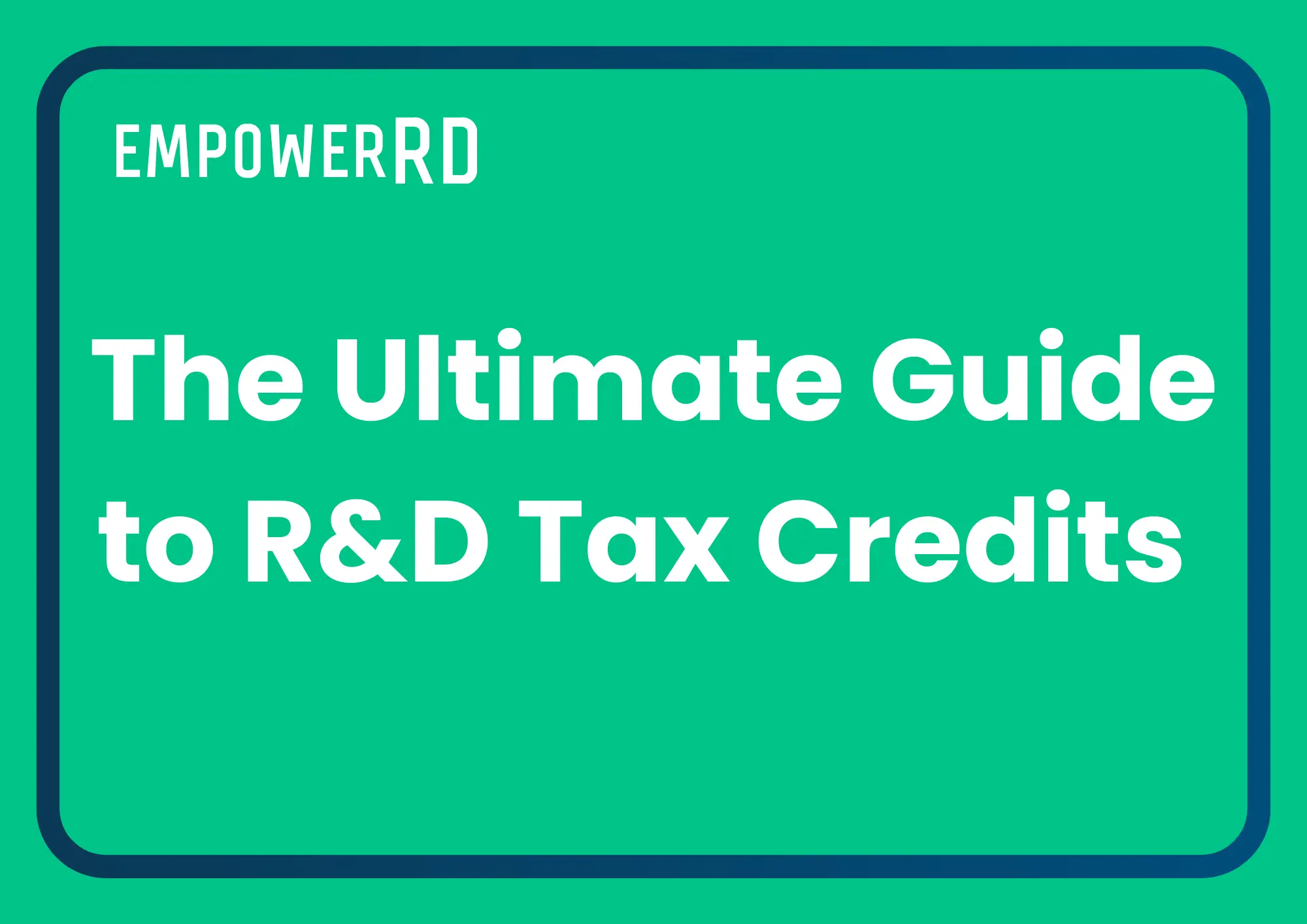Projects drive organisational success, but R&D projects stand apart from standard projects with their focus on scientific or technological advancement.
While both projects and R&D projects involve risk and uncertainty, R&D projects specifically aim to overcome scientific or technological uncertainties through experimentation, ultimately seeking to create new knowledge or improve existing technologies. This makes them eligible for R&D tax relief.
In this article, we’ll explore the differences between a standard project and an R&D project, focusing on the specific criteria and nuances that qualify a project as R&D.
In this article:
What is a standard project?
A standard project is a structured series of activities that is aimed at delivering a specific product, service, or outcome. Although they vary across industries, all projects tend to encounter risks, challenges, and shifting timelines.
While resembling standard projects, R&D projects have a unique goal which is to achieve scientific or technological advancements. In the next section, we’ll explore what qualifies as an R&D project. But first, let’s examine the key traits of a standard project.
Key characteristics of a standard project:
- Flexible or fixed timelines: While many projects operate on fixed timelines, some may have flexibility due to factors like resource constraints or client demands.
- Variable risk levels: Projects can carry significant risks, whether related to budget overruns, project complexity, or unforeseen challenges.
- Uncertain outcomes: Even in standard projects, outcomes may not always be fully predictable, especially if the project is pushing new boundaries in business operations or involves stakeholder management.
- Execution-oriented: The primary focus is on delivering the expected outcome, which could involve creating a new product, service, or process improvement.
It’s important to note that standard projects can have similar characteristics to R&D projects in terms of unpredictability, risk, and complexity. However, they do not specifically aim to solve scientific or technological uncertainties to produce advances in its field.
What is an R&D Project?
As discussed earlier, an R&D project seeks to achieve a scientific or technological advance. To accomplish this, the project must tackle scientific or technological uncertainties. The experimentation and efforts to overcome these challenges must be carried out by skilled professionals, ensuring the project’s success.
Here is HMRC’s definition of R&D:
R&D occurs when a company seeking a scientific or technological advance encounters and attempts to overcome scientific or technological uncertainties through methodical experimentation conducted by a competent professional.
Essentially, R&D projects involve exploring unknown areas of science or technology to create new knowledge, processes, or products. The goal is to advance science or technology in a way that wasn’t possible before.
Key criteria for an R&D project:
HMRC has the following key criteria for an R&D project:
- Advancing science or technology: The project must seek to achieve an advance in science or technology. This means developing new knowledge or improving on existing technologies in ways that are not obvious to professionals in the field.
- Overcoming scientific or technological uncertainties: R&D projects must address uncertainties that competent professionals in the field cannot easily solve or predict using current knowledge.
- Led by competent professionals: Qualified experts with demonstrated expertise must lead the project, and their involvement is key in resolving the uncertainties.
What sets R&D projects apart from standard projects?
A standard project often encounters business-related uncertainties, such as market risks, customer behaviour, or operational inefficiencies. It may also require innovative problem-solving and adaptability. However, an R&D project is focused on scientific or technological uncertainties that cannot be readily overcome by existing knowledge.
For example:
- Uncertainty in a standard project: A software development project might be uncertain about how long it will take to complete, how users will respond to the design, or how to allocate resources most effectively.
- Uncertainty in an R&D project: A project aiming to develop a new machine learning algorithm that achieves a level of accuracy previously unachieved in the field encounters a scientific or technological uncertainty: Is it even possible, with current computational techniques, to achieve this outcome?
This distinction highlights that both types of projects can have risks, complexities, and uncertainty—the key difference lies in whether the project addresses business or operational challenges versus scientific or technological uncertainties.
The following table summarises some of the key characteristics of a R&D project and a standard project:
| Characteristic | R&D Project | Standard Project |
|---|---|---|
| Objective: | To make an advancement in science or technology | To achieve a business or operational goal |
| Type of Uncertainty: | Scientific or technological uncertainty (e.g., can it be done?) | Business or operational uncertainty (e.g., how should it be done?) |
| Scope: | Flexible scope, based on research and experimentation | May be flexible, but focused on delivering a specific outcome |
| Risk and Timeline: | High risk due to scientific unknowns; timeline flexible | Risk level can vary; timeline may be flexible |
| Eligibility for Tax Relief: | Must meet strict HMRC criteria on science/tech advancement and uncertainties | Not eligible for R&D tax relief |
| Success Measurement: | Based on resolving uncertainties and advancing knowledge | Based on delivering on-time, within budget, and meeting specific goals |
Areas not eligible for R&D projects
Not all fields qualify as R&D under HMRC’s guidelines, even if they are challenging or innovative in their own right. For example, projects in the following areas are not considered R&D for tax relief purposes:
- Humanities
- Social sciences
- Economics
- The arts
These fields, while potentially involving significant research or creative efforts, do not meet the criteria for scientific or technological advances, as they focus on human behaviour, society, or creative output.
Example of an R&D project vs. a standard project
Let’s consider two projects within the same company to highlight how similar they can be but with distinct goals and challenges.
Example Projects for EcoBuild Ltd.
Industry: Construction and Technology
R&D Project Example:
- Objective: To develop a new type of sustainable building material that significantly reduces carbon emissions during construction, using innovative nanotechnology.
- Uncertainty: The team is unsure whether the material can be manufactured at scale while retaining its eco-friendly properties. No current material on the market has demonstrated these characteristics, and the project involves pushing the boundaries of material science.
- Advance: The project seeks to advance the science of materials by creating a product that has never existed before. If successful, this material could revolutionise green building practices.
- Competent Professionals: The project is led by materials scientists and engineers with expertise in nanotechnology and sustainable materials.
Standard Project Example:
- Objective: To construct a new eco-friendly office building using existing sustainable materials and known construction techniques. The building must meet strict environmental regulations, but the team is using standard methods.
- Uncertainty: The team faces challenges such as delays in supply chains and ensuring the project stays within budget while meeting environmental standards.
- Advance: The project aims to deliver a building that meets eco-standards but is not advancing science or technology. The risks and uncertainties are business-related, not scientific or technological.
- Competent Professionals: The project is managed by experienced architects and project managers who work within known methods and materials.
Key questions to consider
To help determine whether your project qualifies as R&D and whether it is eligible for R&D tax relief, it’s essential to ask some key questions that assess whether the work involves advancing science or technology and overcoming uncertainties.
Below are some guiding questions to evaluate whether your project meets the criteria for R&D tax relief:
- Could this project be completed using our current practices and standard ways of working?
- Does this project require us to explore new scientific or technological methods or principles?
- Is the problem we’re facing solvable with the knowledge and expertise we currently possess, or does it require new advancements?
- If given unlimited time and resources, would this problem still require new scientific or technological discoveries to solve?
- Are we aiming to achieve an advancement in science or technology with this activity?
- Does the innovation we’re working on exist elsewhere in the market, or are we pushing beyond current capabilities?
- Are we addressing uncertainties that can’t be easily solved by professionals in the field using existing knowledge?
Get in touch
If you’re looking for an R&D tax specialist who combines expert knowledge with cutting-edge technology to deliver efficient, compliant claims at one of the lowest rates in the industry, look no further than EmpowerRD. Get in touch today to learn more about how we can help your business optimise its R&D tax relief and drive innovation forward.









